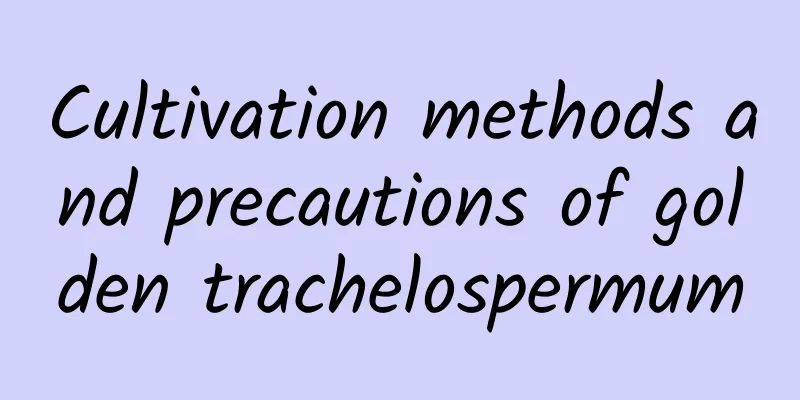How many years does passion fruit bear fruit?

Introduction to passion fruit plantingPassion fruit prefers a warm environment. The suitable growth temperature is between 20-30 degrees. It generally grows well at temperatures above 0 degrees. It grows best when the annual precipitation is 1500 to 2000 mm and is evenly distributed. Passion fruit is usually sown in spring from March to April, while in southern tropical areas it can be sown in January and February. Passion fruit is a perennial herb. If properly cared for, the plant can live for more than 20 years, but the economic value of the fruit is only about 8-10 years. Passion fruit is cultivated in Guangdong, Hainan, Fujian, Yunnan and Taiwan. Common varieties include yellow passion fruit, purple passion fruit and purple passion fruit. Passion fruit planting results after several yearsPassion fruit grows very fast and usually bears fruit one year after planting. It blooms and bears fruit all year round. If it blooms in spring from May to June, it will mature about 50 days after flowering. If it blooms in summer from July to August, it will usually mature about 70 days after flowering. Passion fruit has a shallow root system and is suitable for planting in loose, fertile, moist, breathable and well-drained soil. Its branches and vines have continuous growth characteristics and can bloom and bear fruit all year round as long as a suitable growth environment is provided. Grafted passion fruit blooms and bears fruitGrafted passion fruit will bear fruit in half a year. It can be planted in February or March in spring, using high-quality cuttings for transplanting. Provided with sufficient water and fertilizer, and timely shaping, pest control and other management, it will begin to bloom in late May and bear fruit after the end of the month. Potted passion fruit bearing fruitPotted passion fruit is usually planted by cuttings and can bear fruit in one year. If it is well maintained, it can bloom and bear fruit all year round. Why doesn't passion fruit bear fruit?The reason why passion fruit does not bear fruit may be that there is no pollination. If there are no insects or wind, pollination is not completed, or there is no fragrance, which cannot attract surrounding insects to help with pollination. Passion fruit is not tolerant to low temperature environment, and it may not bear fruit if the maintenance environment temperature is low. Or, it may be because of improper fertilization before and after flowering. Key points for high-yield passion fruit cultivationThe soil for planting passion fruit must be sandy loam, and it must be deeply plowed and turned over before use. Base fertilizer must be applied as a foundation before use, and remember to water it thoroughly after fertilizing. Passion fruit likes sunlight, and it must be given sufficient sunlight to be beneficial to the growth of its branches and vines, as well as its nutrient accumulation. Generally, a light intensity of around 3000 is enough, so that it can achieve the goal of early fruiting and high yield. |
<<: Can papaya seeds be planted?
>>: How long does it take to take wolfberry to cure
Recommend
Roses, succulents, bougainvillea...you can build these 6 gardens even without money!
Rose Garden Sometimes Huahua really likes roses. ...
What kind of flowerpot looks good with Schefflera chinensis
What flowerpots are suitable for Schefflera If yo...
When is the best time to transplant Catharanthus roseus?
Catharanthus roseus is also called Ri Ri Xin. It ...
How to grow roses in autumn
1. Water control It needs water to grow, but is a...
Breeding methods and precautions of Zui Meiren
How to cultivate the drunk beauty Light and tempe...
What to do if the leaves of Chlorophytum are withering
1. Change pots regularly (1) Specific reason: Reg...
How often should I change the water for small fish?
Keeping fish is a hobby that can beautify your ho...
How to water Aspidistra
Key points for watering Aspidistra Aspidistra is ...
Can succulents be repotted in summer? Will succulents die if they are repotted in summer?
Can succulents be repotted in summer? Succulent p...
Peach tree growth environment conditions and characteristics
Peach tree growth environment conditions and requ...
How to grow passion fruit in autumn
1. Sufficient water Because passion fruit itself ...
What to do if the leaves of the lotus lantern turn yellow
First: Light factor The cardinal lights grown ind...
How to get high yield when growing sweet potatoes?
Sweet potato, also known as sweet potato, is comm...
What flowers are suitable for growing in Luzhou? What are the city flowers and trees?
1. Climate characteristics of Luzhou Luzhou has a...
What should be paid attention to when transplanting pepper seedlings (when is the right time to transplant peppers)
Peppers not only have a long growth cycle but als...









